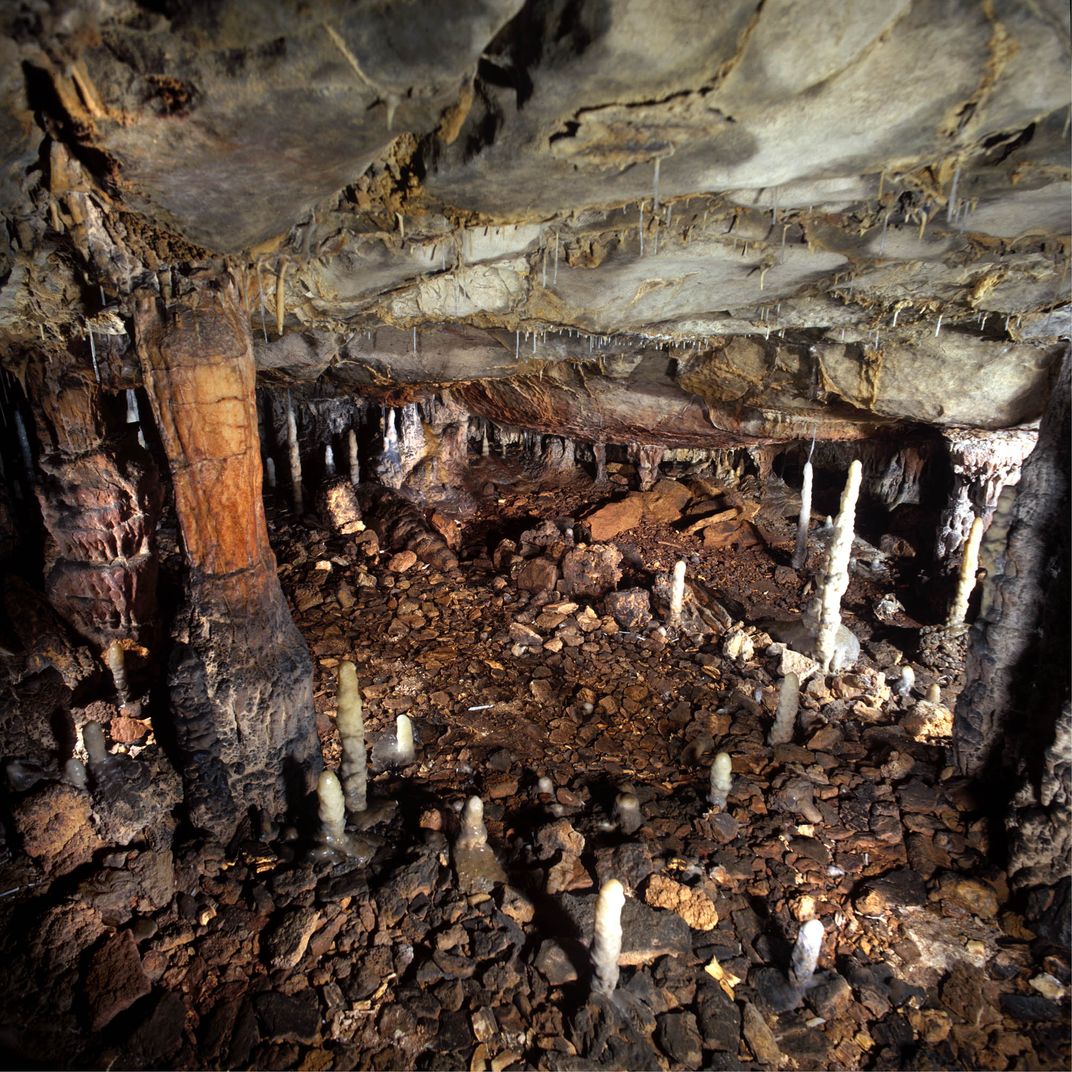Humans May Have Hunted Cave Lions to Extinction—For Throw Rugs
Dear cave lions: We’re so, so sorry.
/https://tf-cmsv2-smithsonianmag-media.s3.amazonaws.com/filer/20/17/201702aa-43b4-46ef-bbe4-16a1ede2f3f8/working.jpg)
It turns out safari-going bros worried about their masculinity aren’t the only ones who collect animal skin rugs. New research finds that our ancestors may also have had a propensity for advertising their hunting prowess by preserving the furs of their kills.
Their prize trophy, however, was no meager lion but a creature called a "cave lion." These formidable predators once roamed the forests from Europe to the Canadian Yukon, hunting reindeer, goats and (now extinct) wild cattle. At more than 11 feet long and weighing around 700 pounds, they made today’s African lions look like half-grown kittens. And, at least to some Upper Paleolithic people, they sure must have looked good as rugs.
Sadly, cave lions disappeared from the scene around 14,000 years ago. No one knows exactly why, but researchers have long suspected that man played some role in their demise. That hypothesis now looks even more likely: A paper published today in the journal PLOS ONE reports that newly discovered cave lion claw bones show signs of being modified by a technique similar to that used by modern hunters to skin prey.
The new finds suggest that humans not only hunted cave lions, but also valued them enough to bling out their homes with the predator’s full skin—claws and all. “The (cave) lion is a difficult and dangerous animal to hunt, and it probably played an important role as a trophy and for use in rituals,” says lead author Marián Cueto, a zooarcheologist at the University of Cantabria in Spain. “There are many cases in history in which different societies used carnivore pelts as a symbol of power.”
Previously, researchers have found evidence of humans consuming cave lions in the Middle Pleistocene period and of lion teeth being used as ornaments and tools during the Upper Paleolithic. But not much more is known about early hominid interactions with these predators. Cave lion fossils are scarce, and those showing any evidence of human processing even rarer.
The new study was made possible when researchers came across a relative treasure trove of cave lion fossils in the lower gallery of a cavern in northern Spain called La Garma. “When you walk into the cave, it’s like traveling back to a specific moment in our evolution,” Cueto says. “It’s like a time machine.” Over 4,000 fossils have been discovered there, many of which bear evidence of human modification. But this is the first time anyone has found cave lion remains in La Garma.

The researchers discovered nine claw fossils that belonged to a single cave lion. The fossils all bore tell-tale scrapes and cuts like those found today when a hunted animal’s claws have been deliberately kept on its skin. The fossils’ markings were all quite similar as well, implying that the ancient man or woman who skinned the cat was familiar with cave lion skinning and anatomy.
According to radiocarbon dating of the cave, the “lion of La Garma,” as the team is calling it, lived about 16,000 years ago during the Upper Paleolithic, making it one of the latest specimens ever discovered.
Based on ethnographic analogies and ancient art that links large felines to ritual use, Cueto and her colleagues suspect the skinning process might have taken place in a symbolic context. After removing the skin, the full pelt may have been displayed on the cave floor or else used to cover a hut.
Still, “it is almost impossible to be sure that prehistoric people used the fur for a ritual context, even if other pieces of evidence such as cave art or portable objects from other regions and period in Europe point to a special link with cave lions,” says Hervé Bocherens, a paleobiologist at the University of Tubingen in Germany who was not involved in the research. “Other purposes cannot be ruled out.”
As their name implies, cave lions spent part of their lives in caves. Unfortunately, Upper Paleolithic humans also favored those sheltered abodes. Moreover, both species competed for the same prey, including reindeer, and were contenders for the same living space—tensions that have led researchers like Cueto to believe that humans likely played a role in the cave lion’s extinction.
With the addition of this new study, Cueto says, evidence is also building that humans directly hunted cave lions. “Hunting was not the only cause for cave lion extinction, but it likely played a significant role in addition to other human-related activities,” she says.
Bocherens says more data are needed before we can draw such conclusions. “One key piece of information is missing: How often were lions hunted by prehistoric humans?” he says. “What I would be interested to see done in the future is to test if this lion was indeed a member of the local ecosystem, or if the skin could have been obtained from other prehistoric groups living further north, such as France, where cave lions were more common.”
Cueto plans to continue combing the Spanish cave system for clues that will help solve such remaining mysteries. For starters, cave lions have 18 claws, but she and her team discovered just nine, indicating that there may be more fossils awaiting discovery on the cave floor. “Undoubtedly we will continue our research in La Garma,” she says. “There are still many surprises in this awesome site.”
/https://tf-cmsv2-smithsonianmag-media.s3.amazonaws.com/accounts/headshot/Rachel-Nuwer-240.jpg)
/https://tf-cmsv2-smithsonianmag-media.s3.amazonaws.com/accounts/headshot/Rachel-Nuwer-240.jpg)